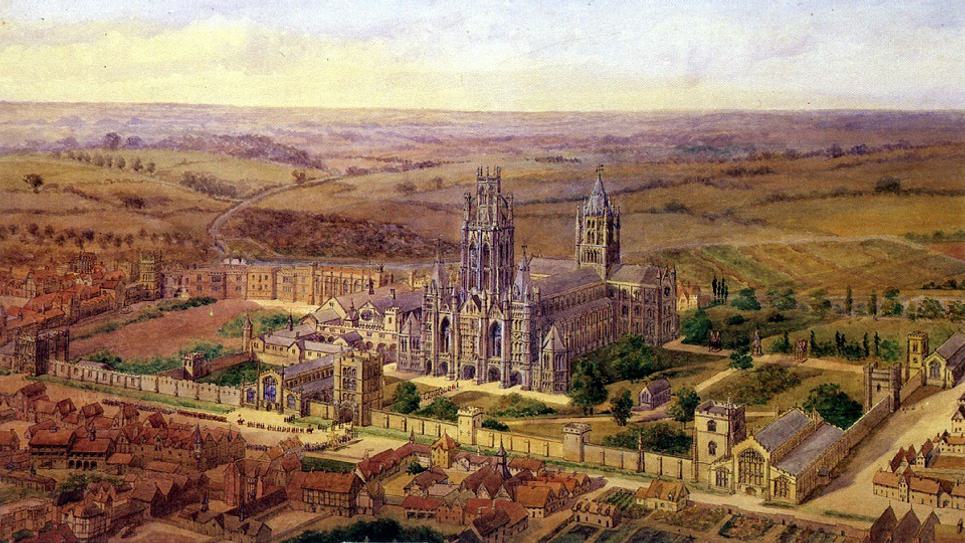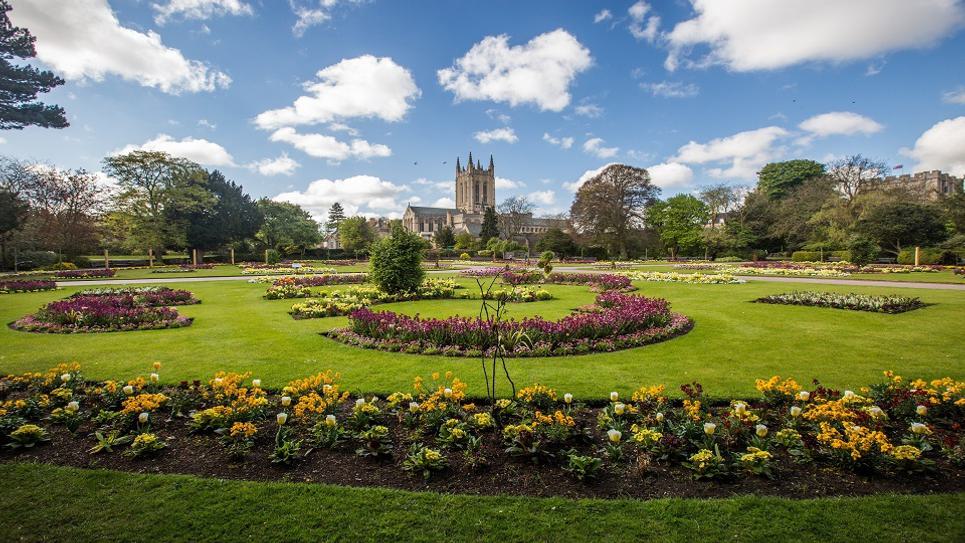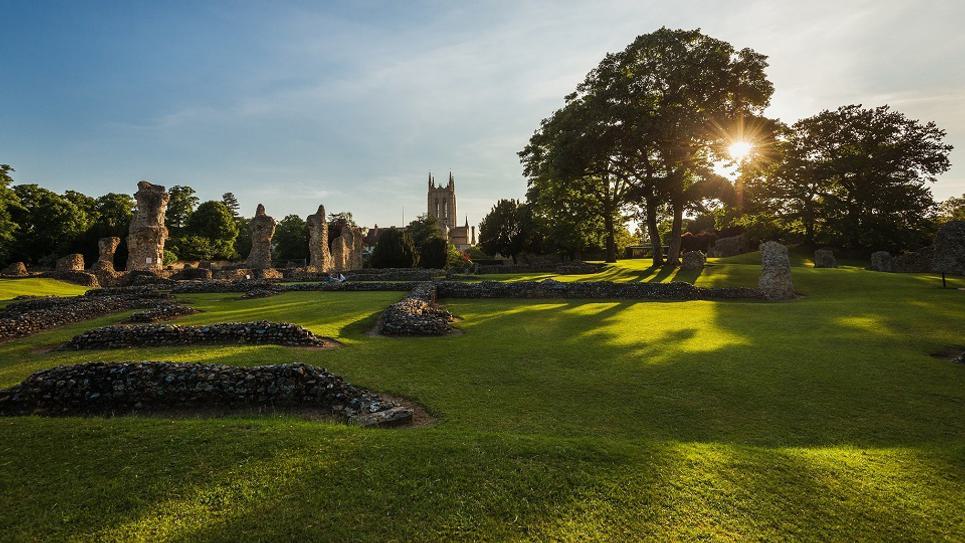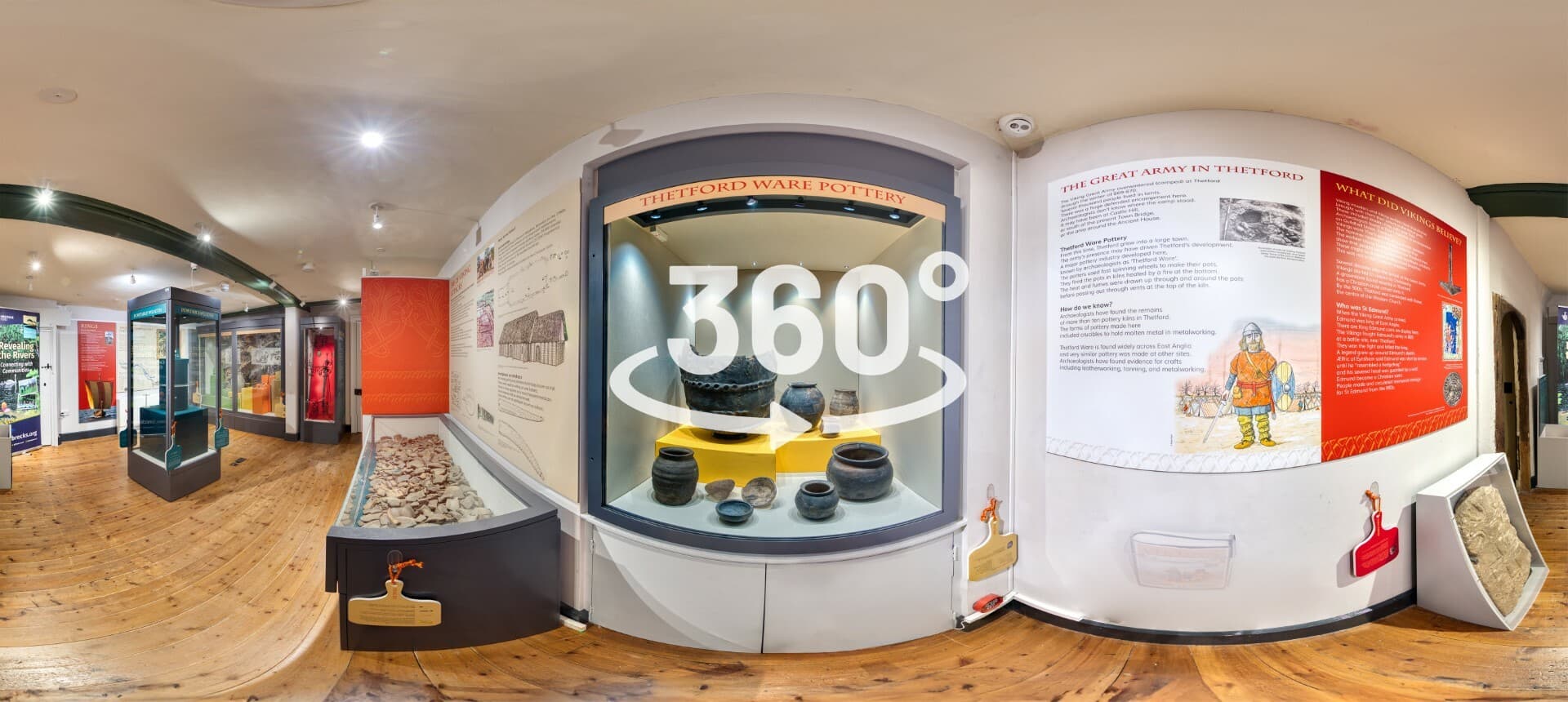
Back to Blogs
Discover
Ickworth, The Hervey Family and the Abbey Gardens
Grateful thanks to Ickworth Research Group and National Trust Ickworth for this article
The Abbey of St Edmund was Surrendered to The Crown - What Next?

At the dissolution of the monasteries, the property of the Abbey of St Edmund was surrendered to the Crown on 4th November 1539 but much of the wealth had already been confiscated in the previous year.
On 14 February 1560, Queen Elizabeth I sold “All that the site, circuit and precinct of the late dissolved Monastery of Bury …” to John Eyer for £412 19s 4d. John Eyer (d. 1561) was the Receiver General for Norfolk, Suffolk, Cambridge and Huntingdon. He was a great purchaser of religious houses, and in addition to the Abbey he bought amongst others the Grey Friars, the Black Friars and Augustinian Friars houses in King’s Lynn.
In 1727, the site of the Abbey was acquired by the Davers family, who used it as the large garden to their town house at Abbey House on Angel Hill. They bought it from Major Richardson Pack (1682-1728) who had bought it in 1720 for £2,800.
The Abbey grounds descended to Sir Charles Davers when he succeeded his brother as 6th Baronet. He died in 1806 “when the site of the Abbey and the Stewardship of the franchise, descended to the second sister’s second son, Frederick, now Marquis [sic] of Bristol”, who owned the Ickworth Estate.
In 1820, Nathaniel Hodson set up a Botanic Garden east of the churchyard in Bury St Edmunds.
The Hervey family seems to have had little involvement in the scheme. None of the family were original subscribers to the garden, probably because they were travelling in Europe between 1817 and 1821. The first recorded visit was not until October 1824, when the then Countess of Bristol visited the Botanic Garden with her daughters. The future Marquess and his son, Lord Jermyn, seemed more concerned with the development of their gardens at Ickworth than with the Bury’s Botanic Garden.
Hodson’s
Botanic Garden became so successful that voices began to raise the idea that an
added attraction to the Botanic Gardens would be desirable. The Bury and
Norwich Post of 3 June 1829, reported that many of the subscribers “are
desirous that a military band should be in attendance”, for one evening a week,
as was the custom at Botanic Gardens in Liverpool and Bath. As there was no
space for this to be a practical proposition, Hodson began to look for a bigger
site for the gardens.
The most obvious site for an enlarged public garden was within the Abbey
Grounds.
By the Autumn of 1830 it had been agreed that Hodson could rent from Lord Bristol six acres on the site of the Great Court of the Abbey, for £60 a year, the same rent that he had already been paying at the old site. As the area had been used as a private garden for Abbey House on the Angel Hill for many years when the Davers were in residence, the walls were covered in fruit trees, and the soil was in good condition. This compared very favourably with the swampy nature of the lower parts of the existing Botanic Garden. In addition, the whole site was located more favourably, and graced by the Abbey Gate and surrounded by picturesque ruins.
Nathaniel Hodson died in 1861 and Alfred Hooper, a farmer originally from Dorset, obtained a three-year lease of the Botanic Garden from Lord Bristol at a rent of £166 a year.
The
Botanic Garden continued to be popular and the lease continued to be extended
into the early 20th century.
Bury St Edmunds Pageant 1907

Bury St Edmunds held a Grand Pageant of St Edmund in 1907 to commemorate its historical past. It was performed in the Abbey Gardens, and Theodora, the soon to be 4th Marchioness, took part as Jane Drury.
The 1907 Pageant resulted from the upsurge of interest in Bury St Edmunds' history. The previous year, the town had celebrated the 300th anniversary of its Charter. The town council invited renowned Pageant Master Louis Napoleon Parker to run the event. To benefit the town's businesses and boost community spirit, he insisted that everything used in the pageant be made in the town itself.
Thousands of local people were involved. Local artist Rose Mead designed the costumes. More than 700 people helped to make them. There were over 2,000 actors, with many of the leading roles taken by prominent citizens. The pageant depicted various episodes from Roman times to the Dissolution of the Monastery. Daily performances were held in the Abbey Gardens during the second week in July.
In 1909, following the success of the Pageant, the Town Improvement Committee turned to the idea of making a freely available public park amenity of the Abbey Gardens and ruins. The death of King Edward VII in 1910 and the impending coronation of King George V gave the occasion which the Committee felt deserved to be marked by a new public park.
It required £650 to be found for compensation of existing tenancies and costs, and a Public Subscription was launched. Bury’s MP, the Hon Walter Guinness, immediately stumped up £200, and with this incentive, the remainder was eventually raised.
A great deal of legal wrangling ensued with the London lawyers of the 4th Marquess of Bristol, led by Alderman Owen Clark and backed up by Alderman Thomas Nice. Clark eventually succeeded in negotiating a settlement in 1911.
In 1912 the Bury St Edmunds Borough Council took out a lease of the gardens from the Marquess of Bristol for £90 a year.
On 28 December 1912, the Abbey Gardens was officially opened as a free park for the enjoyment of local inhabitants, by Lady Guinness.
New ideas were incorporated into the Abbey Gardens in 1936, when the old Botanic Garden layout was replaced. The central area of the gardens was redesigned and Hodson’s concentric circles were replaced by sixty-four island beds which have remained there ever since.
In 1953 the Borough Council bought the gardens from the Bristol family for £7,814, in the wake of the 4th Marquess of Bristol’s death in 1951.
Many improvements were made to the gardens over the years and in 1955 the area of the abbey ruins was placed into the guardianship of the Ministry of Public Buildings and Works, now known as English Heritage.
Another pageant held in 1959 involved a cast of thousands from all over West Suffolk. The twelve performances were sold out weeks before the opening night. There were 10 episodes, staged In the Abbey Gardens In front of elaborate scenery. Some of them covered the same events as in 1907. However, the emphasis was on the freedoms which began with the Magna Carta.
Colour films made of both the later productions followed the example set in 1907. The Involvement of so many local people in these events ensured that they are fondly remembered even to this day.

Today, 1.3 million people a year visit the gardens and in 2020 it was named as the fifth most visited free attraction in England by VisitEngland.
The Abbey Gardens, in the heart of Bury St Edmunds, is the perfect spot for enjoying peace and quiet whilst watching the world go by. And it is FREE to visit!
Internationally renowned for its colourful and attractive displays and the heritage of its backdrop make the gardens a very special place to visit and visitors come from all over the world to see it.
It is not hard to understand why the Abbey Gardens have won the prestigious Green Flag Award on numerous occasions, it is a stunning venue for the many and varied cultural events which take place in Bury St Edmunds. Today, approximately 20,000 plants are bedded out in the spring for the summer display plus 12,000 plants and 20,000 bulbs in the autumn for the spring display.
Find out more about what to see and do in the garden in our Abbey Gardens Guide.
Discover The Abbey Gardens
Related Blogs

News
Abbey Project Awarded…
The project aims to conserve and protect the ruins;…

News
Cycle the Wolf Way
Winding its way around many of the best bridleways,…

News
360° Degree Vikings
The Brecks Fen Edge and Rivers Landscape Partnership…

News
Dame Barbara Woodward DCMG…
Dame Barbara Woodward DCMG OBE Announced as Speaker at…

News
Celebrate St Edmund's Day on…
St Edmund's Day is celebrated around the world every…
Latest news

News
Discover Suffolk's County Flower - the Oxlip
Did you know that Suffolk has a county flower? The Oxlip only grows in some woodland areas of Suffolk, Cambridgeshire and Essex.

News
Quentin Blake ‘The Illustrated Hospital’ exhibition at Bury St Edmunds Museum
A summer exhibition of illustrations by Quentin Blake at Moyse’s Hall Museum, Bury St Edmunds presents a rare opportunity to view a large collection of pieces by one of the nation’s favourite artists.

News
Abbey Project Awarded National Lottery Heritage Fund Grant
The project aims to conserve and protect the ruins; build a visitor centre, west cloister, and network of footpaths; and use digital technology to provide exciting interpretation for all ages and…

News
Walks at Rougham
Rougham Estate offers 18 miles of public footpaths, cycling routes and permissive pathways for you to enjoy.

News
Bury St Edmunds Celebrates English Tourism Week
Bury St Edmunds MP, Jo Churchill, met representatives from the town’s attractions and tour guides involved with the town’s Masters of the Air tourism campaign at Bury St Edmunds Guildhall.

News
Tours Take Off for Masters of The Air
Tours developed by Bury St Edmunds Tour Guides and Bury St Edmunds Guildhall to tie in with the Apple TV Series Masters of The Air so popular more dates are being added.

News
International illustrator David Hughes draws largest exhibition Bury St Edmunds
The largest ever exhibition is now underway at Moyse’s Hall Museum featuring the work of internationally acclaimed illustrator David Hughes.

News
A Taste of Bury St Edmunds and Suffolk
After visiting Suffolk's foodie capital, you'll want to take it with you - here are 5 foodie treats to take home!

News
Doctor Who Stars Coming to Bury St Edmunds to Star in Sherlock Holmes Classic
Who stars Colin Baker, Terry Molloy, and Rosie Baker will star in Hound of The Baskervilles at Bury St Edmunds Theatre Royal
